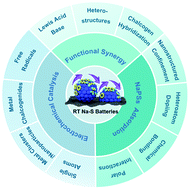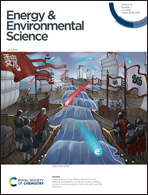Materials engineering for adsorption and catalysis in room-temperature Na–S batteries
Abstract
Room-temperature sodium–sulfur (RT Na–S) batteries constitute an extremely competitive electrochemical energy storage system, owing to their abundant natural resources, low cost, and outstanding energy density, which could potentially overcome the limitations of the current dominant lithium-ion batteries, such as their high cost and limited materials resources. Nevertheless, a severe shuttle effect and sluggish reaction kinetics are the two major obstacles that impede the sustainable development and practical application of RT Na–S batteries. Therefore, research into adsorption and catalysis strategies for the RT Na–S chemistry has attracted a great deal of interest and become the focal point of battery research in this area. In this review, we comprehensively summarize the recent advances in materials engineering for adsorption and catalysis in RT Na–S batteries. The electrochemical mechanisms and critical challenges are presented first. Various adsorption strategies with different forms and principles are then discussed, including nanostructured confinement, heteroatom doping, covalent bonding, and polar interactions. Subsequently, electrocatalysis engineering for RT Na–S batteries is comprehensively reviewed, including the topics of electrocatalysis theory, characterization methods and techniques, and design of electrocatalysts. These electrocatalysts encompass single atoms, metal clusters/nanoparticles, metal chalcogenides, and free radical species. In addition, the synergistic relationship between adsorption and catalysis is of great significance to synchronously address the issues of the shuttle effect and improved redox kinetics; hence, designs for adsorption-catalysis synergy are provided, including Lewis acid–base reactions, heterostructures, and chalcogen hybridization. Finally, significant challenges and future developmental directions regarding RT Na–S batteries are summarized and their prospects are discussed.

- This article is part of the themed collection: Energy and Environmental Science Recent Review Articles


 Please wait while we load your content...
Please wait while we load your content...